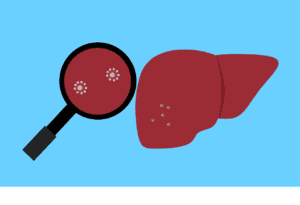Porphyria
What is porphyria?
Porphyria is a group of disorders that are characterized by an accumulation of chemicals that are responsible for the production of porphyrin, which is necessary for the function of hemoglobin. High levels of porphyrin can lead to issues in the skin and nervous system.
There are two forms of this disorder: acute and cutaneous. The former affects the nervous system and the latter affects the skin.
What are the symptoms of porphyria?
Symptoms vary depending on the type of porphyria one has. Symptoms of acute porphyria include:
- Pain in the abdomen, chest, legs, and back
- Constipation
- Diarrhea
- Nausea
- Vomiting
- Pain, tingling, paralysis, numbness, and weakness in the muscles
- Discolored urine
- Mental changes
- Breathing issues
- Urination issues
- Heart palpitations
- High blood pressure
- Seizures
Symptoms of cutaneous porphyria occur when people are exposed to sunlight, and they are:
- Burning pain caused by exposure to sunlight or possibly artificial light
- Sudden, painful swelling and redness of the skin
- Blisters on exposed skin
- Itching
- Excessive hair growth
- Discolored urine
- Fragile, thin skin when skin color changes
There are also complications that can result from this condition. Acute porphyria can be life-threatening if an attack is not treated properly. Long term complications include chronic pain, chronic kidney failure, and liver damage. Complications of cutaneous porphyria are permanent scarring and skin damage.
What causes porphyria?
Issues with the production of heme result in porphyria. In order to produce heme, eight enzymes are required. A lack of one of these enzymes results in both types of porphyria.
The majority of cases of this condition are inherited. They can be inherited in both an autosomal dominant and autosomal recessive patterns.
There are also risk factors that can trigger the genetic components of porphyria. Triggers can be exposure to sunlight, certain medications, recreational drugs, diets or fasting, smoking, physical or emotional stress, alcohol use, and menstrual hormones.
How is porphyria diagnosed?
The rarity of porphyria can make it difficult to diagnose, as can the similarity of symptoms to other diseases. Doctors may perform a variety of tests to rule out other conditions and confirm a diagnosis of porphyria. These tests may be blood, urine, or stool tests. Genetic testing may also be used.
What are the treatments for porphyria?
Treatment for this condition consists of avoiding triggers and managing symptoms. Avoiding triggers entails not using certain medications, avoiding recreational drugs and alcohol, not smoking, no fasting or dieting, taking hormones for menstrual issues, avoiding sun exposure, reducing emotional and physical stress, and treating any other illnesses quickly.
Treatment that is specific to the acute form of this condition consists of injections of hemin, sugar taken through mouth or IV, and hospitalization for severe symptoms.
Treatment for cutaneous porphyria may entail periodically drawing blood, hydroxychloroquine, and vitamin D supplements.
Where can I find out more about porphyria?
Porphyria Articles

April 19 is Global Porphyria Day: Spreading Rare Disease Awareness

These Rare Diseases Cause Pain After Sun Exposure. Dersimelagon Could Help.

Compassion Corner: One Knowledgeable Doctor Helped a Porphyria Patient Get Outpatient Treatment

Patient Story: Rock Star Tommy Steele Talks Childhood Porphyria Diagnosis



Misconceptions About Porphyria Can Make it Even Harder to Handle




